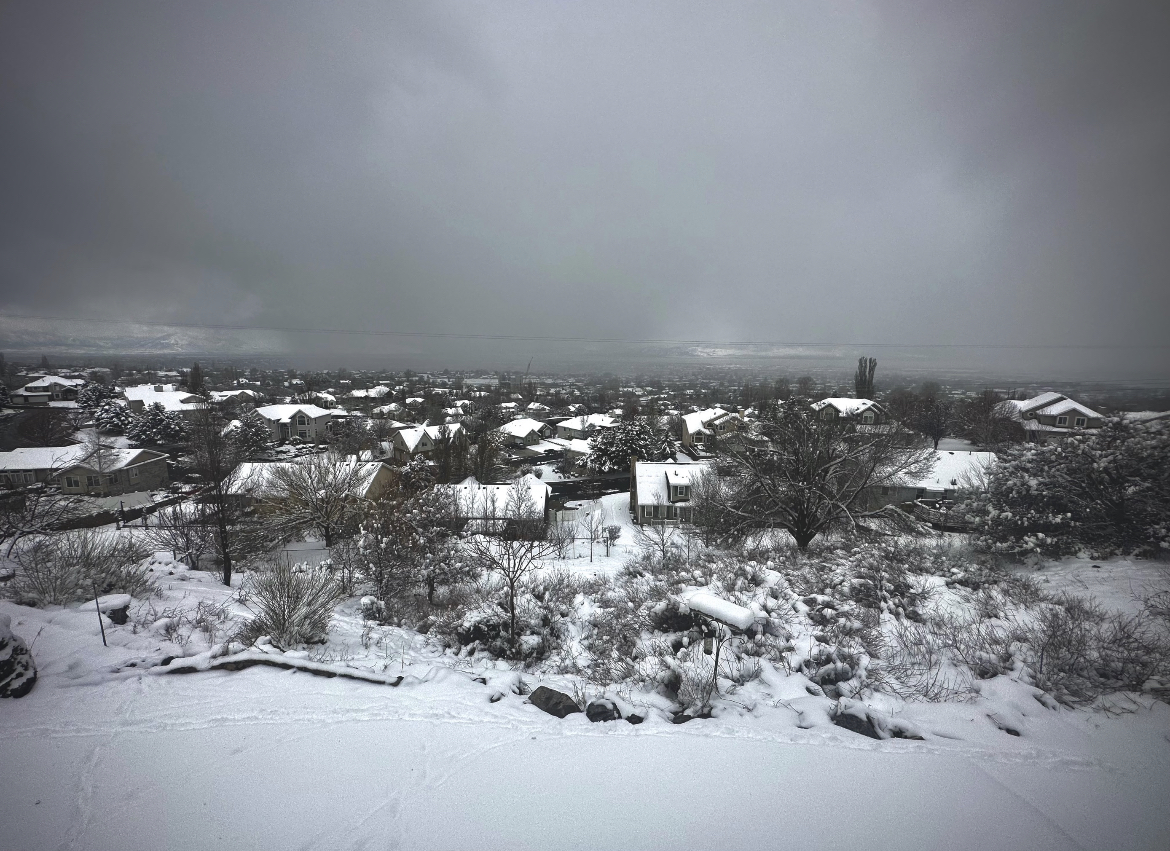It seems as though Utah is smashing records every hour with an unprecedented winter, despite the fact winter ended on March 20.
The weather is generating mixed responses from Utahns; some are staying optimistic that the excess snow could significantly benefit the Great Salt Lake, while others are worried about flooding when it does warm up.
Both are equally valid responses. In fact, many believe that this unusual winter comes as a response to Gov. Spencer Cox’s June 2021 declaration that “we need some divine intervention,” and asked Utah residents to pray for rain.
The Great Salt Lake, which could disappear in the next five years, has been in dire need of immediate relief. Unfortunately, this record-breaking winter probably won’t relieve its predicted grim future.
Whether the record-breaking snowpack is a coincidence or divine intervention, the Great Salt Lake may still be at risk. Ben Abbott, an assistant professor at BYU contributed a report in January 2023, which warned of the lake’s ecosystem potential collapse.
Believing that the increased precipitation of the year is divine intervention, Abbott rhetorically asked lawmakers: “Are we going to continue to ask God for these gifts and we’re not doing what we can?” Abbott also believes that lawmakers are not adequately handling the situation.
Many fear that dramatic winter could have effects on homes and businesses due to an increased risk of floods in several areas. On Monday, April 3, Gov. Cox tweeted an official declaration that April will now be Flood Safety Awareness Month in Utah.
Interestingly enough, this will mark “almost exactly 40 years after the 1983 flood that turned State Street into a canal,” according to Deseret News. The article goes on to detail that the 1983 incident was “caused by record levels of snow melting rapidly — this year, Utah received even more snow than that.”
Wade Matthews, the spokesperson for the Utah Division of Emergency, warns that the risk of floods is high. Matthews says “The elements are there,” and “It just depends on Mother Nature now — how fast it warms up.”
Salt Lake County Emergency Management Director, Clint Mecham, reports that engineers are working to figure out a way to tackle two issues at the same time by redirecting flood water into the Great Salt Lake, which has already begun to dramatically increase.
“Reinforcing and increasing the capacity of the infrastructure that actually carries the water from the watershed down through the valley and into the Great Salt Lake,” says Mecham.
Other officials, including Glen Merill, the hydrologist for the National Weather Service in Salt Lake City, explain that as long as the snow melts gradually, flooding is unlikely. “What we want to see moving forward is some of the lower-elevation snow start melting off, and then the mid-elevation, so that we warm up in chunks over time.”
“It’s certainly a year to prepare,” Merill told Deseret News.
To properly help Utahns prepare for a flooding incident, several resources have been made available to worried residents.
- Many locations across Utah offer free sandbags for people to stock up on.
- To see the Government’s flood response plan and view Utah’s Flood Risk Map, click here.
- To learn more about Utah’s flood risk and history, click here.
- For more information about how to prepare for and handle flooding, read the Salt Lake Tribune’s Utah flooding resource guide: What to do before, during and after a flood










